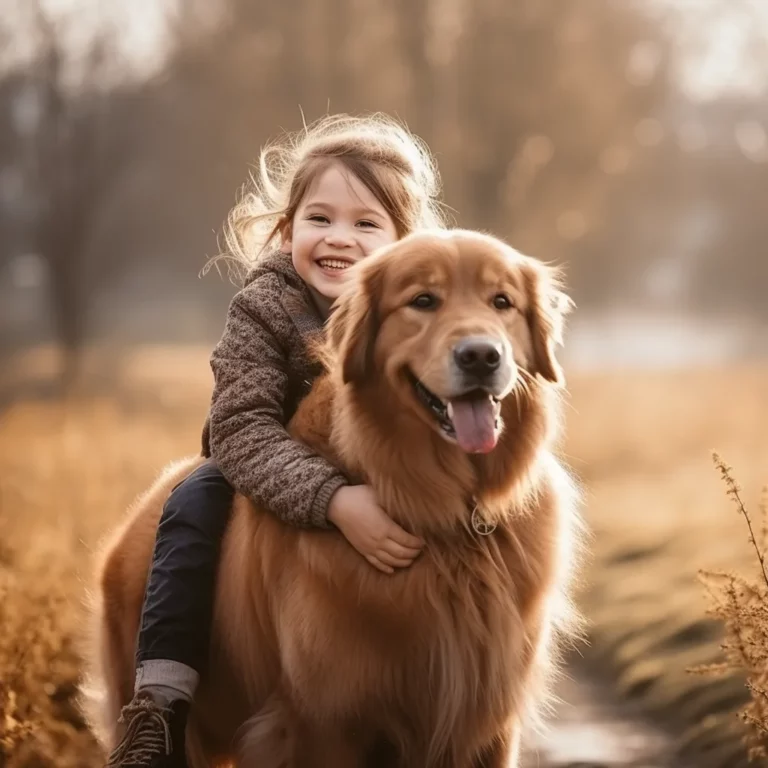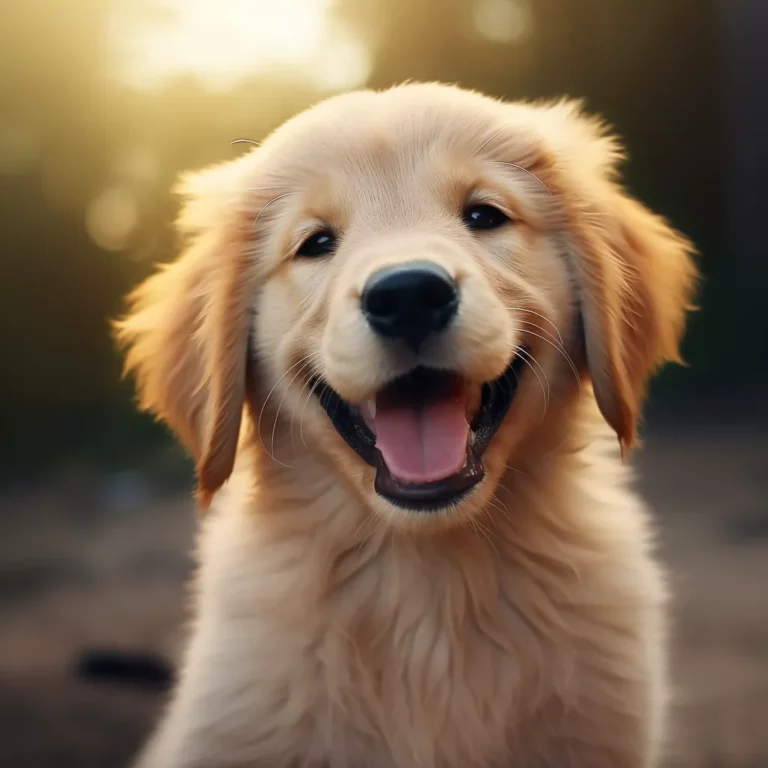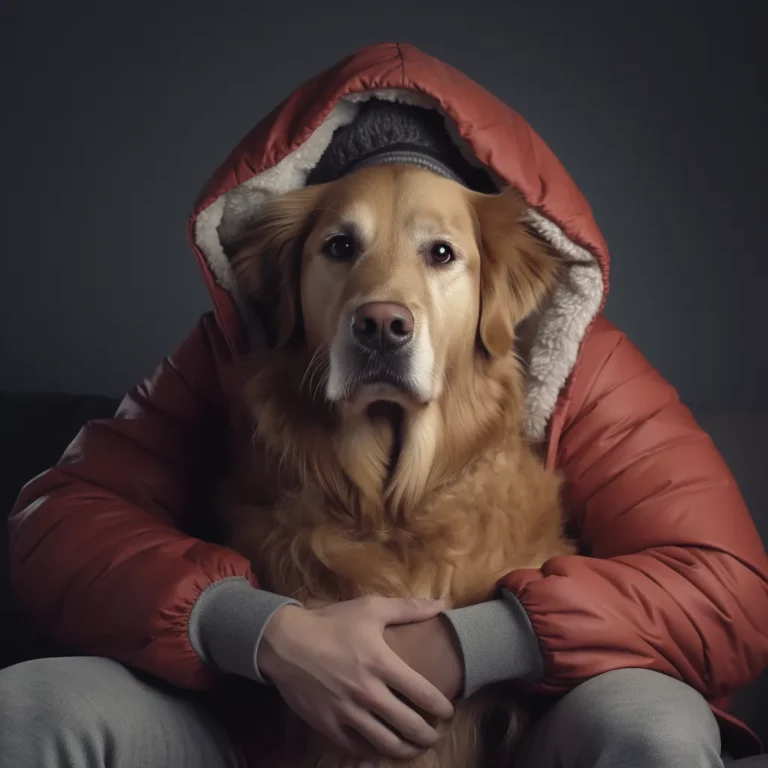Golden Retriever Tail: Characteristics and Health Tips
The wag, the swish, and the joy! There’s a lot behind the golden retriever tail. Let’s understand its significance and anatomy.
The Golden Retriever Breed
Golden Retrievers are one of the most popular dog breeds in the world, loved for their friendly and affectionate personalities. Originally bred in Scotland in the mid-19th century for retrieving game birds, Golden Retrievers have since become well-known companions and service dogs due to their loyalty, intelligence, and versatility.
One of the most distinctive features of a Golden Retriever is their tail – long, feathered, and expressive. The tail serves several purposes such as balance, communication and warmth.
The Distinctive Tail
A Golden Retriever’s tail is an important part of their anatomy – it is long and covered in dense fur that grows longer with age. The tail has been bred to be strong enough to act as a rudder when swimming or running through fields along with enhancing overall appearance of breed.
The thick fur on the tail helps keep them warm outdoors during cold weather conditions. They also use their tails to communicate with other dogs or humans – wagging their tails happily when excited or lowering it when feeling frightened or cautious.
Why Knowing When A Puppy’s Tail Gets Fluffy Matters
If you’re considering adopting a Golden Retriever puppy, it’s important to understand when you can expect your pup’s tail to become fluffy. Not only does it help with determining your pup’s age but also gives insight into how much time you’ll need to put into grooming as they grow older.
By knowing how soon your furry friend will develop long hair on its tail, you can plan ahead for regular grooming sessions. This will ensure that your pup remains comfortable and healthy while avoiding matting or tangles in its coat which could cause discomfort over time.
Conclusion
A Golden Retriever’s tail is a unique and important aspect of their appearance and personality. Knowing when your pup’s tail will become fuzzy helps you plan for grooming needs, understands the age of your dog, and ensures that your pup remains healthy and comfortable as they grow older. In the next section, we’ll look at when a Golden Retriever puppy’s tail starts to grow.
When Does a Golden Retriever Puppy’s Tail Start to Grow?
Golden Retriever puppies are known for their adorable, fluffy tails that are one of the most distinctive features of the breed. However, not all puppies are born with fluffy tails.
In fact, a Golden Retriever puppy’s tail starts to grow and develop in stages. The first stage typically begins at birth when they have a short and straight tail that is not yet fluffy.
As they grow older, the tail starts to thicken and become more plump. By the time a Golden Retriever puppy is around two weeks old, you will start noticing some fluffiness around the base of their tail.
The second stage usually occurs around 5-6 weeks of age when you will begin to see more fur growth along the length of their tail. This is when your pup’s tail will start looking fuller and longer than before.
The final stage happens between 8-10 weeks old. During this period, your Golden Retriever puppy’s tail becomes fully grown with thick fur covering it entirely.
Explanation of Developmental Stages
It should be noted that there is no set timeline for each developmental stage as it can vary between puppies. Some pups may have a fluffier tail than others at an earlier age due to genetics or other factors such as nutrition or environmental conditions. As mentioned previously, a newborn Golden Retriever has a short and straight tail without any fur yet.
Over time, however, growth hormones stimulate hair follicles on the base of their spine causing hair growth which eventually leads to the development of warmth-preventing insulation on their bodies: their fluffy coat! As your pup continues growing during these stages from birth until 10 weeks old or so (when we consider them “fully grown”), expect changes in length/thickness/fluffiness matching each stage since each stage is key to the tail’s growth.
Factors Affecting Growth Rate of a Puppy’s Tail
Several factors can affect how quickly your Golden Retriever puppy’s tail grows. Genetics plays a significant role in determining the fluffiness and length of their tail. Additionally, nutrition and health status may affect their coat development rate, as proper nutrition is essential for healthy hair growth.
Environmental factors, such as temperature and humidity, can also affect the rate at which your pup’s tail grows. Optimal temperature and humidity levels are necessary for healthy hair follicle development, so it’s important to keep them warm during colder months and cool when it’s hot outside.
Another factor is grooming habits. Brushing your pup’s tail regularly can help stimulate hair growth and remove any tangles or mats that could slow down its growth rate.
Regular grooming also helps to promote healthier fur by removing any dead skin cells while distributing natural oils throughout your furry friend’s coat – keeping it shiny and soft! Now that we’ve covered when a Golden Retriever puppy’s tail starts growing, let’s take a look at how long it takes for their tails to become fully fluffy!
Fluffy Tails: How Long Does it Take?
Golden Retriever puppies are known for their cute, fluffy tails. But how long does it take for a Golden Retriever puppy’s tail to become fluffy?
The answer varies depending on the individual puppy and gender, but generally, a Golden Retriever puppy’s tail will start to look fuller and fluffier around 4-6 months old. This is when the coat begins to transition from the soft, baby fur to the longer and thicker adult fur.
Male puppies tend to have slightly slower tail growth rates than female puppies. However, genetics also play a significant role in determining how quickly a puppy’s tail will become fluffy.
It is essential to keep in mind that every dog is unique and develops at its own pace. While some pups may have full, fluffy tails by six months of age, others may take longer to reach this milestone.
The Timeline for Fluffy Tails
At about two weeks old, a Golden Retriever’s tail will start growing from its base. After one month of age, the pup’s fur begins to thicken and lengthen as they grow older.
Around three months of age, you should begin seeing more noticeable signs that your golden retriever’s tail hair has thickened considerably. By four months old, you should be able to tell if your pup’s coat has the potential for having an extra fluffy coat or not.
Around six months of age or younger (depending on genetics), your Golden Retriever’s adult coat should start growing in fully for both male and female puppies. When this happens with your furry friend’s tail too then their signature floofy golden retriever tails will be complete!
Male vs Female Growth Rates
While gender differences don’t always hold true in every case when it comes down to growth rates between male and female Golden Retrievers, males generally take longer to have a fluffy tail. This is because male golden retrievers tend to have longer hair on their bodies than females.
However, it’s important to note that genetics play an even more significant role than gender when it comes to how fast your puppy’s tail will become fluffy. For example, if your male puppy has a parent with a particularly fluffy tail, then he may develop his own fluffy tail much earlier than other males.
Regardless of gender or genetics, the main factor in the timeline for a Golden Retriever’s tail becoming fluffy is simply time. As long as your pup is healthy and well-cared for with proper nutrition and grooming habits, their furry little tails will grow in beautifully and be ready for plenty of wagging!
Tips on How to Care for a Golden Retriever Puppy’s Fluffy Tail
Golden Retrievers are known for their beautiful, fluffy tails that add to their charm and playful demeanor. As a responsible pet owner, it is essential to ensure that your furry friend’s tail is healthy, shiny, and tangle-free. Proper grooming and maintenance of a Golden Retriever puppy’s tail are crucial as it can help prevent skin infections and keep them comfortable.
Importance of Proper Grooming and Maintenance for a Healthy and Beautiful Coat
Grooming your Golden Retriever puppy regularly is crucial in maintaining their coat’s health and appearance. A beautiful fluffy tail requires attention above all areas of the dog’s body. When brushing their fur or cleaning them with shampoo, pay special attention to the long hair on their tails as it can easily tangle or mat if not cared for correctly.
Keeping your Golden Retriever puppy clean is also essential in controlling shedding. During shedding season, be sure to brush your dog daily to remove any loose hair that may otherwise end up in places you do not want them.
Recommended Products and Techniques for Keeping Your Pup’s Tail Soft, Shiny, and Tangle-Free
The key tool needed when caring for your Golden Retriever puppy’s fluffy tail is a slicker brush with long pins designed specifically for long-haired dogs like Golden Retrievers. Brush your pup’s tail regularly from the base towards the end of the fur gently but firmly without causing pain or discomfort.
You should also invest in quality shampoo products specifically designed for dogs’ sensitive skin when cleaning his coat. Avoid using human shampoos or other harsh chemical products as they may dry out his skin leading to scratching which can harm the delicate hairs of his fluffy tail.
Whenever your Golden Retriever puppy’s tail does become tangled or matted, it is essential to tackle the problem as soon as possible. The longer you leave it, the harder it will be to remove any knots or mats without causing discomfort.
Use a detangling spray to help loosen any tangles gently. Use scissors carefully if needed, making sure not to cut too close to the skin.
Your Golden Retriever puppy should also have a healthy diet with proper nutrients that support their coat’s health and growth. A well-balanced diet will make their tail fur soft and silky, shining in all its golden glory.
Caring for Your Pup’s Fluffy Tail Is Worth It
Grooming your Golden Retriever puppy regularly can seem like a tedious task at first instance, but taking care of their fluffy tails is worth every effort. When you see them wagging that beautiful furry tail around in happiness and confidence, you will know that all your hard work has paid off in keeping your pup happy and healthy.
Fun facts about Golden Retrievers’ tails
Golden Retrievers are one of the most beloved dog breeds, known for their friendly temperament and distinctive wagging tails. But did you know that their tails have a rich history and some unique behaviors?
Here are some fun facts about Golden Retriever tails: Their tails were bred for function, not just looks: The Golden Retriever breed was developed in Scotland in the 19th century to retrieve waterfowl during hunting expeditions.
The breeders wanted a dog with a thick, muscular tail that could act as a rudder when swimming in cold water. The tail also served as a way for hunters to spot their dogs from afar.
Golden Retrievers’ tails are called “otter” tails: The Golden Retriever’s tail is thick at the base and tapers towards the end, resembling an otter’s tail. This shape allows for maximum control underwater while swimming and helps with balance on land.
Their wagging can show different emotions: When a Golden Retriever wags its tail vigorously, it usually means they’re happy or excited. However, if their tail is stiff and erect while wagging slowly, it may indicate aggression or fear.
They can curl their tails when relaxed: When lounging or sleeping, many Golden Retrievers will curl their long fluffy tail around themselves like a warm blanket. It’s an adorable habit that adds to their charm!
Interesting trivia about the history and evolution of the breed’s distinctive tails
The development of the Golden Retriever breed was influenced by several breeds such as Tweed Water Spaniel (now extinct), Irish Setter, Bloodhound etc., however specifically bred for retrieving purposes. Here is some interesting trivia on how this led to them having such distinctively beautiful (and functional) tails:
The breed was almost lost during World War II: During the war, many dog breeds were in danger of extinction due to food shortages and the need for military resources. The Golden Retriever breed was fortunate enough to have been sent to North America before the war, where they were bred and preserved.
The breed standard for tail appearance has changed over time: The first Golden Retrievers had straight tails, but over time breeders began to favor a more curved tail. In 1930, the British Kennel Club changed their standard to require a “moderately long” tail that is “broad at the base, tapering gradually towards the tip”.
They were originally called “Yellow Retrievers”: The breed was first recognized by the Kennel Club of England in 1903 as “Yellow Retrievers”. It wasn’t until 1920 that they officially became known as Golden Retrievers.
Unique behaviors associated with wagging, chasing, or curling their tails
Golden Retrievers are known for their happy-go-lucky personality and love for life. Their tails often reflect their moods and can give us clues about how they’re feeling. Here are some unique behaviors associated with wagging, chasing, or curling their tails:
They may wag their tail while eating: This may seem odd at first glance but it’s actually a sign of contentment! If your Golden Retriever is happily wagging its tail while chowing down on dinner, it means they’re enjoying their meal.
They’ll chase anything that moves: Golden Retrievers are notorious for chasing everything from balls to butterflies. When they spot something moving in front of them (especially if it’s small), it triggers an instinctual urge to run after it!
Curling up with their tail is a sign of relaxation: As mentioned earlier, Golden Retrievers have a habit of curling their tails around themselves when they’re relaxing. It’s a sign that they’re comfortable and feeling safe in their environment.
They’ll wag their tail to make friends: When approaching new people or dogs, many Golden Retrievers will wag their tail vigorously as a way of saying “hello”. It’s an endearing trait that makes them popular with both humans and other animals.
Conclusion
In this article, we have explored the fascinating topic of Golden Retriever tails and their growth stages. We have discussed when a Golden Retriever puppy’s tail starts to grow, how long it takes for their tail to get fluffy, and tips on how to care for your pup’s tail. We also learned some fun facts about Golden Retrievers’ tails, such as why they love chasing them and how they use them for communication.
Understanding your pup’s developmental stages is crucial when it comes to their overall health and well-being. By knowing when a Golden Retriever puppy’s tail grows, you can better understand what to expect during each stage of their growth and provide appropriate care along the way.
Proper grooming and maintenance are essential for a healthy coat, so make sure to invest in high-quality products that suit your pup’s needs. Keep in mind that every puppy is unique, so their growth rate may vary from one another or even between genders.
However, with patience and consistent care, you can help your little pup achieve a beautiful fluffy tail that complements their charming personality. Owning a Golden Retriever is an incredibly rewarding experience filled with many joys and responsibilities.
Their fluffy tails are just one of the many features that make them so special! Remember to always be patient with your pup as they grow and develop into wonderful companions who will fill your life with love and happiness for years to come.





